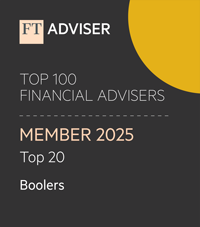Reveal Menu
Investment Update March 2023

Gavin O’Neill









Investment Update
The last week has returned many thoughts and comparisons back to the Global Financial Crisis (GFC) of 2008. The GFC was created from a systemic flaw in the banking system, which had become too indebted and dependent on illiquid, hard to trade assets that turned out to be linked to the housing market. We are fully aware of the market volatility that followed and unprecedented levels of Central Bank intervention, which we are finally unwinding.
Roll forward 15 years and we are yet again faced with another ‘crisis’ within the banking sector. Silicon Valley Bank in America and Credit Suisse in Switzerland have this week relied upon support from various sources (Central Banks, US compensation scheme and HSBC) to try and provide some stability. The main issue stems (although Credit Suisse have been struggling to make profits for some time) from rising interest rates providing depositors with more attractive homes for their cash. As depositors called back their money, SVB, as an example, were forced to call back (fixed interest) assets that had been invested for the long term and had to be sold down at a reasonable loss, compounded by the negative returns achieved in 2022.
The above example does compare back to the scenario faced by institutional pension schemes last year after the ill-fated attempts to stimulate growth by Liz Truss and Kwasi Kwarteng resulted in a spike in bond yields and created a spiral of forced selling.
Our view is that these are isolated incidents and not an example of a wider systemic problem within the banking sector.
The key questions for 2023 are still yet to be answered – will there be a recession? Will inflation fall back towards central bank targets? At what level will interest rates peak? In recent months we have seen financial markets flit between these scenarios. December was a month of recession worries (lower growth, lower inflation, lower interest rates), January and February months of disinflation (steady growth, lower inflation, lower interest rates), whereas March has been a month of stronger economic outlook (higher growth, higher inflation, higher rates). This see-saw between possibilities and the volatility that follows is likely to continue for some time until markets gain some clarity and certainty. In this environment, remaining diversified across different assets, regions and styles remains the most appropriate strategy in our view.
Returning back to the GFC in 2008, at the time volatility was extreme and we experienced significant falls in markets, but we know with the benefit of hindsight that a recovery does follow and we have worked through this many times. The recent events are nowhere near the scale of the GFC but worth a moment of reassurance for our clients.
We will of course continue to monitor events and manage your assets accordingly.
THE BOOLERS INVESTMENT COMMITTEE
“At Boolers, you know that things will be dealt with properly and professionally. A real safe pair of hands!”
“I have always found the quality of advice, technical knowledge and level of service is second to none. ”
“Thank you to all of you for such a wonderfully smooth transaction! Hope we can do it again some time.”
“Boolers provided excellent advice when we needed it most.”
“Boolers have provided myself, family and business with pension and investment advice for over 30 years and continue to provide a high quality professional service to us all on an ongoing basis.”
“Chris Ball has been our Financial Adviser for many years and, from the start, we have been impressed with his strategic sense, his deep knowledge and his skills in helping us build our own successful retirement. He understands our aims and how to achieve them and has taken great care of us throughout. ”



